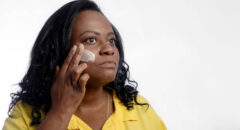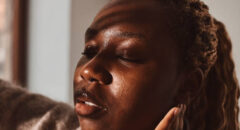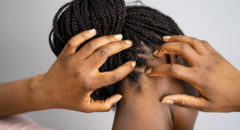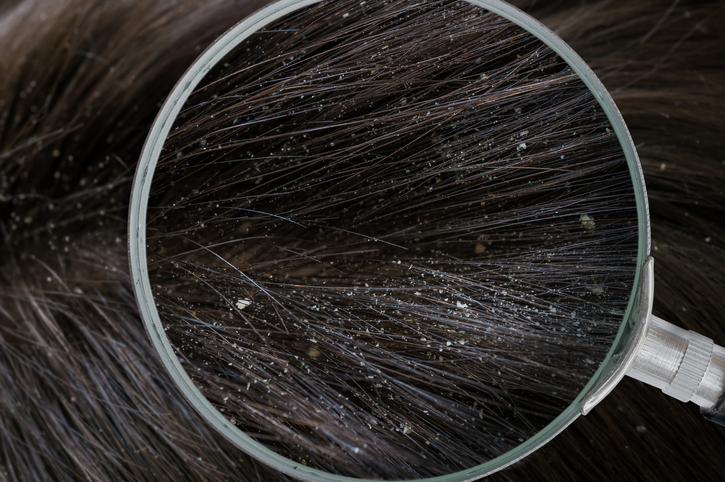
Do you think you are suffering from dandruff?
There's an old saying that goes, "You only get one time to make a first impression."
And that is so true, especially when it comes to dandruff. Seeing those little white flakes on your shoulders and clothes is not a good look. But what you see may not actually be dandruff, it could be something more serious.
#1: It could be Seborrheic Dermatitis
Seborrheic dermatitis appears on the body where there is a lot of oil-producing (sebaceous) glands like the upper back, nose and scalp.
The exact cause of seborrheic dermatitis is unknown, although genes and hormones play a role. Microorganisms that live on the skin naturally can also contribute to seborrheic dermatitis.
People of any age can develop seborrheic dermatitis including infants (known as “cradle cap”). The triggers for seborrheic dermatitis include:
- Stress
- Hormonal changes or illness
- Harsh detergents, solvents, chemicals and soaps
- Cold, dry weather
According to the American Dermatological Institute, the skin disease looks more scaly and inflamed than dandruff.
However, both are itchy and cause flaking—and the treatment for both dandruff and seborrheic dermatitis is the same.
Though researchers are still uncertain about what causes seborrheic dermatitis, the condition may develop due to the yeast that naturally resides on skin, to weather conditions and/or to stress.
Some recommend patients alternate each day using either a zinc pyrithione shampoo or a selenium sulfide shampoo. (Both antidandruff shampoos are available over-the-counter.)
Rotating between the two may be a better way to keep the yeast on your scalp from overgrowing, she says.
To treat related facial symptoms, a dermatologist or primary care doctor may recommend a topical antifungal or topical steroid to alleviate rashes.
#2: It Could Be Skin Cancer
Dandruff is flakiness that happens all over the scalp, while flakiness in a targeted area may be a sign of something more.
So, if a patient has a new quarter-size area on her scalp that always flakes, Farah may consider skin cancer as a cause.
Other signs may include that the spot won't heal, bleeds or is painful.
As you age and your hair thins at the crown, you're at an increased risk for skin cancer in this area. If you see something while doing your hair, it's important to bring it up with your doctor.
While there are many different types of skin cancer, studies show melanoma can be especially dangerous when located on the scalp.
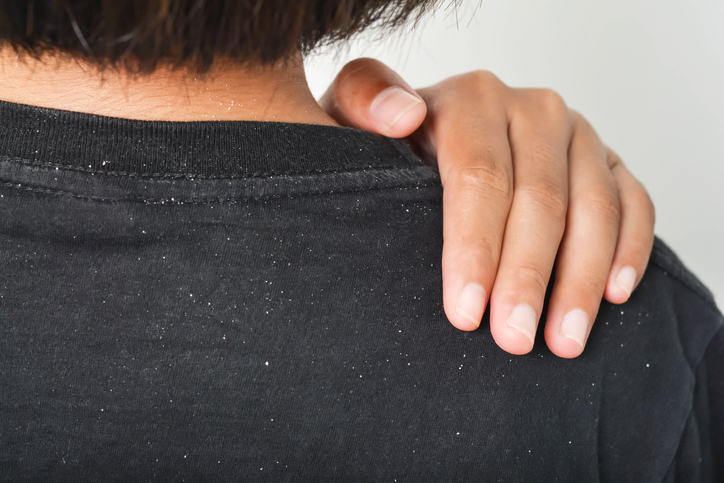
#3: It Could Be A Reaction To Your Hair Oil
You can become sensitized to a hair product and develop what is called a contact allergy. Along with scalp flaking and redness, you may also notice a rash on other parts of your body where the product touched your skin, such as on your neck or eyelid.
The essential oils in 'all-natural hair products can also irritate the scalp, as can some ingredients in hair-regrowth treatments.
After you stop using the offending product, things should start to clear up in two to three days, though more severe reactions can take up to two weeks to go away.
Most often, though, the source of contact allergies is hair dye, specifically a commonly used chemical called PPD (paraphenylenediamine). If you experience this and are not considering the idea of going gray, there are coloring alternatives out there—ask your hairstylist.
The scalp is also just another place where autoimmune conditions may show up and, sometimes, that may be the only place you find such a clue.
These diseases occur when your immune system attacks healthy cells and organs in your body; psoriasis, for example, is commonly marked by an itchy, scaly rash, which can affect the scalp. Of course, if you see flaking, you don't have to assume you have an autoimmune condition if you're otherwise healthy.
As long as you're not dealing with unexplained symptoms (fatigue, muscle aches and a low fever are often the initial signs of autoimmune disease), it's okay to try using regular treatments like antidandruff shampoos for four to six weeks.
If the rash doesn't start clearing up then, see your doctor (or dermatologist). A biopsy may be the first step to discovering what's really going on.
So shake those flakes off and find the right remedy to look your best and keep your scalp healthy.




